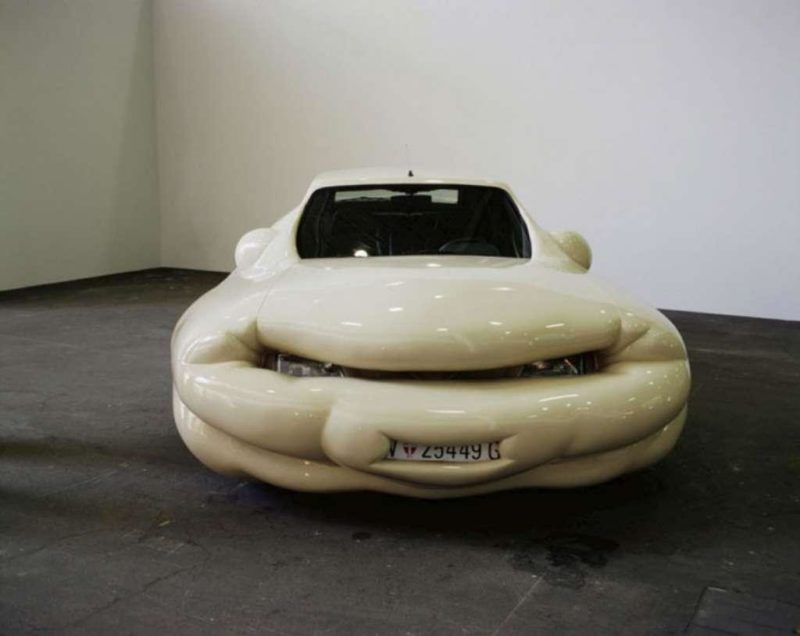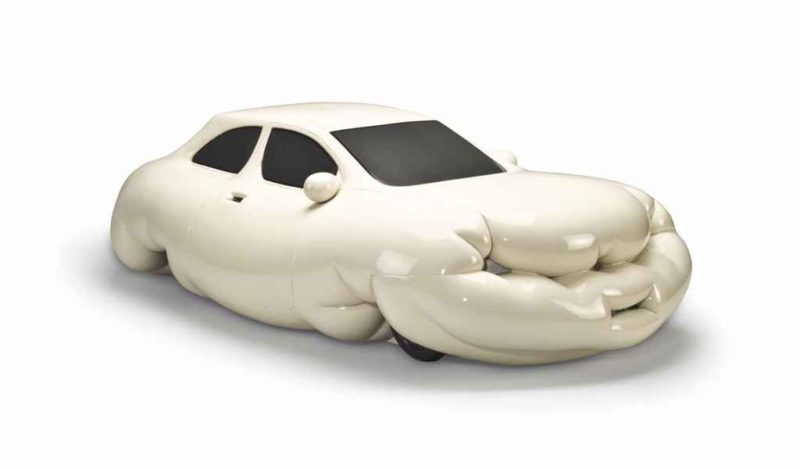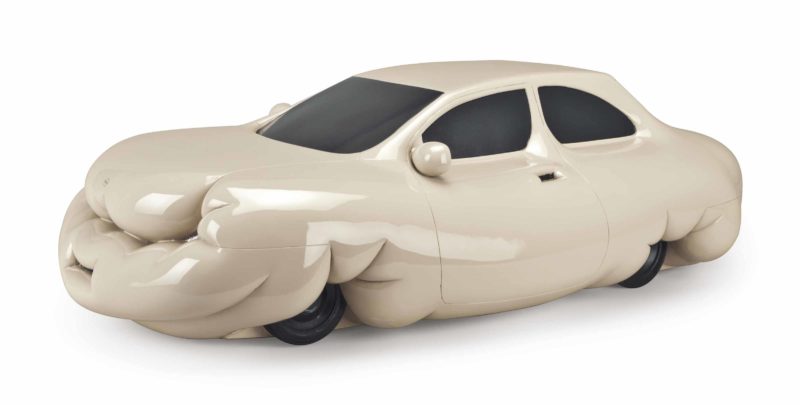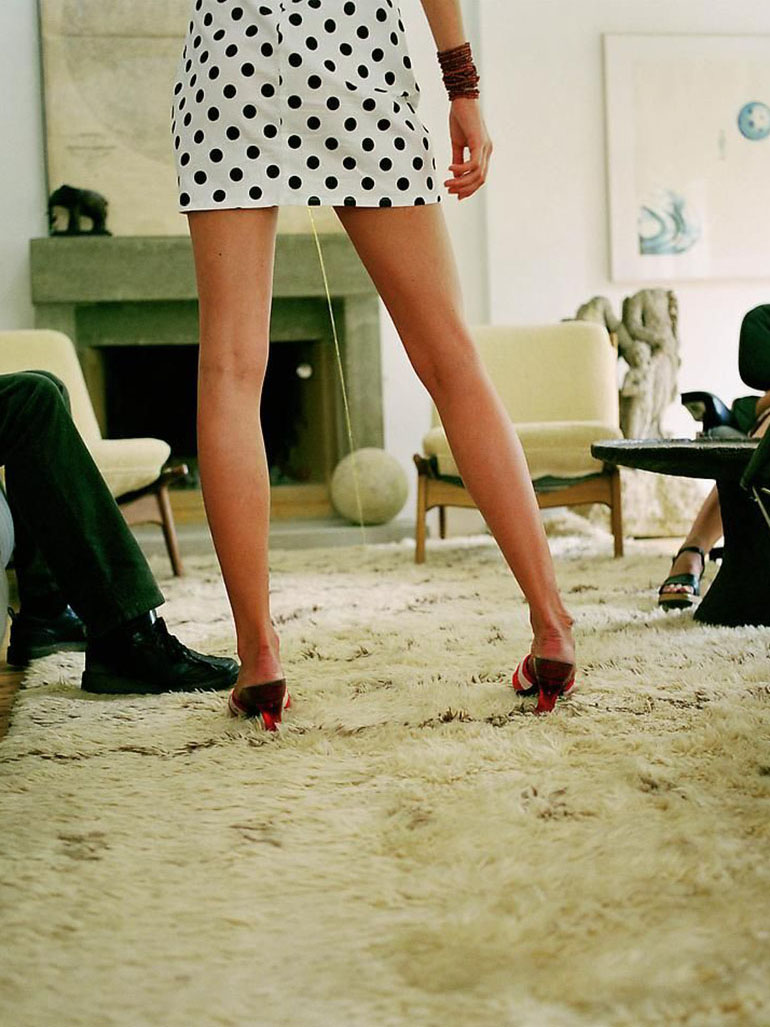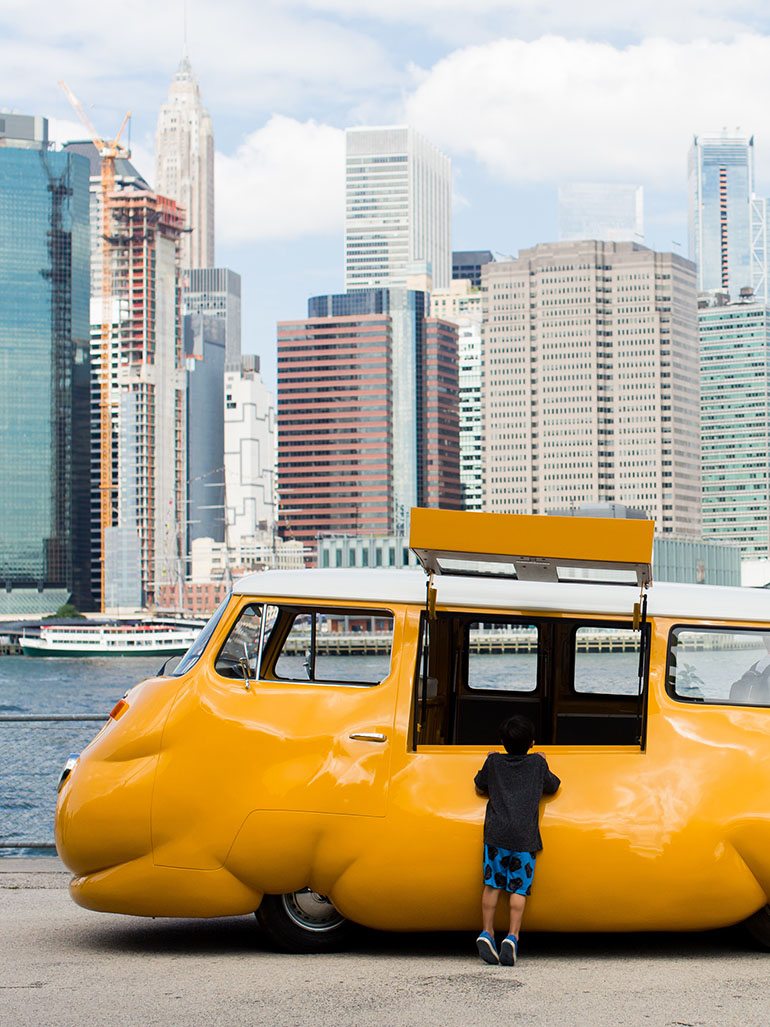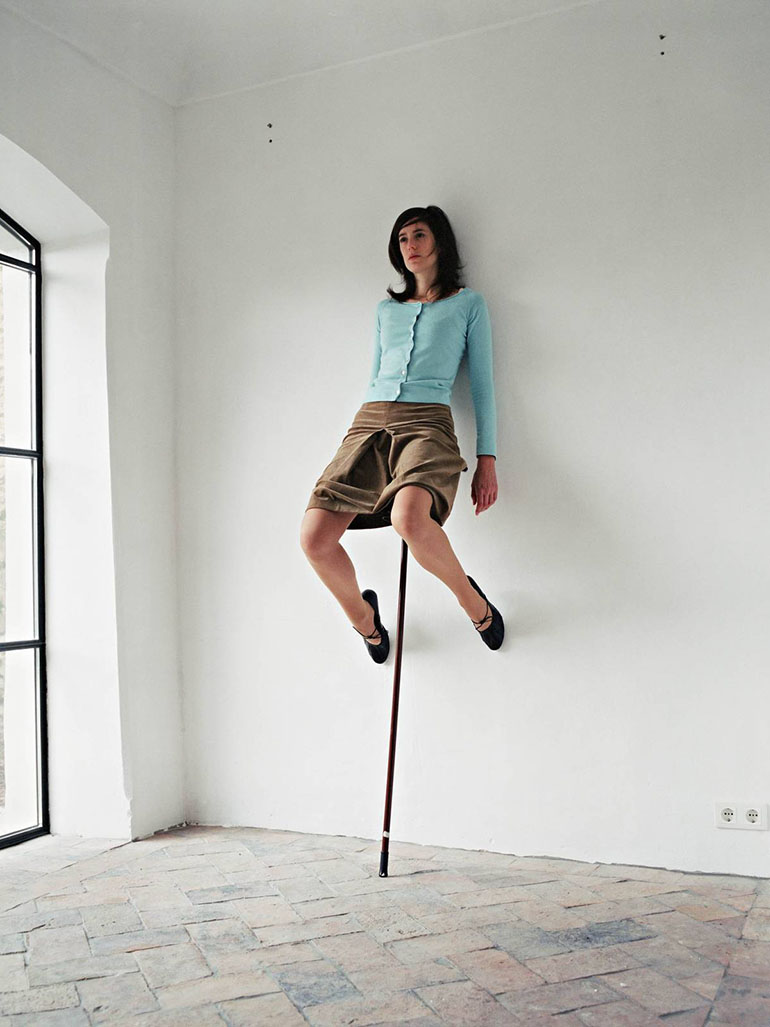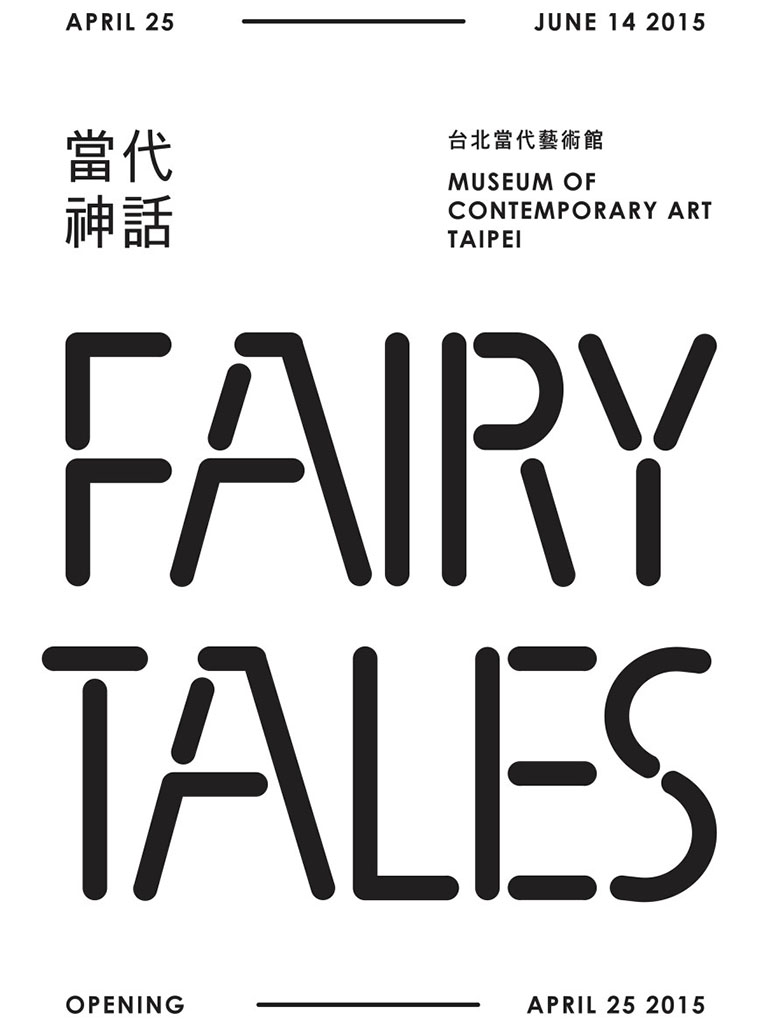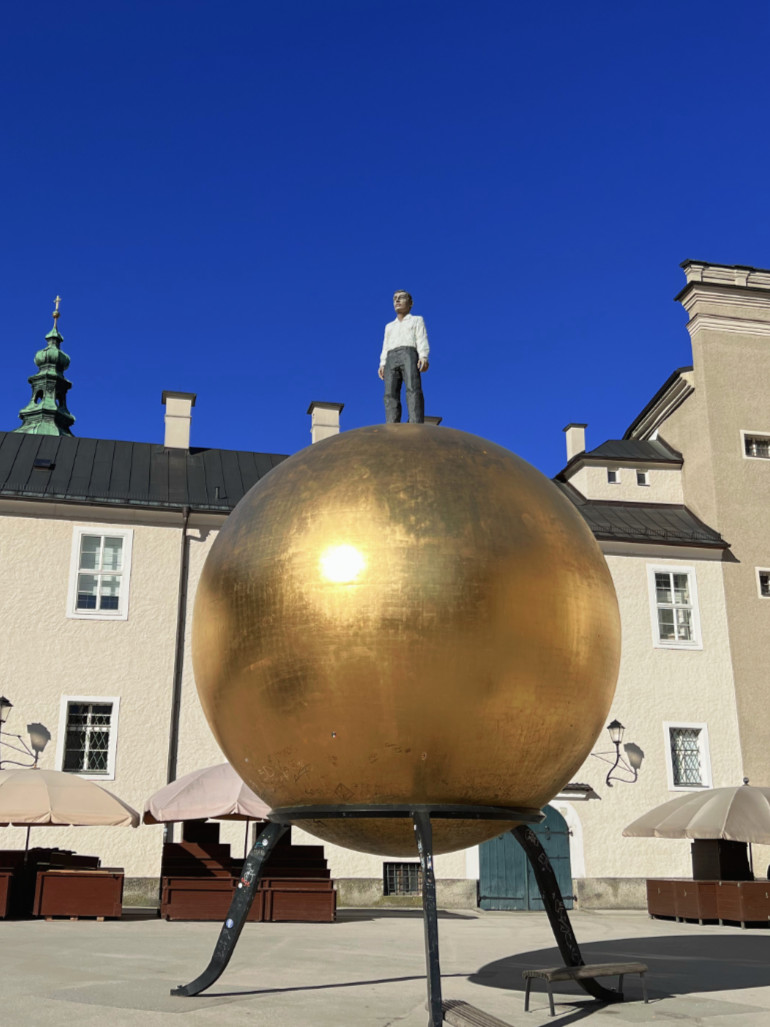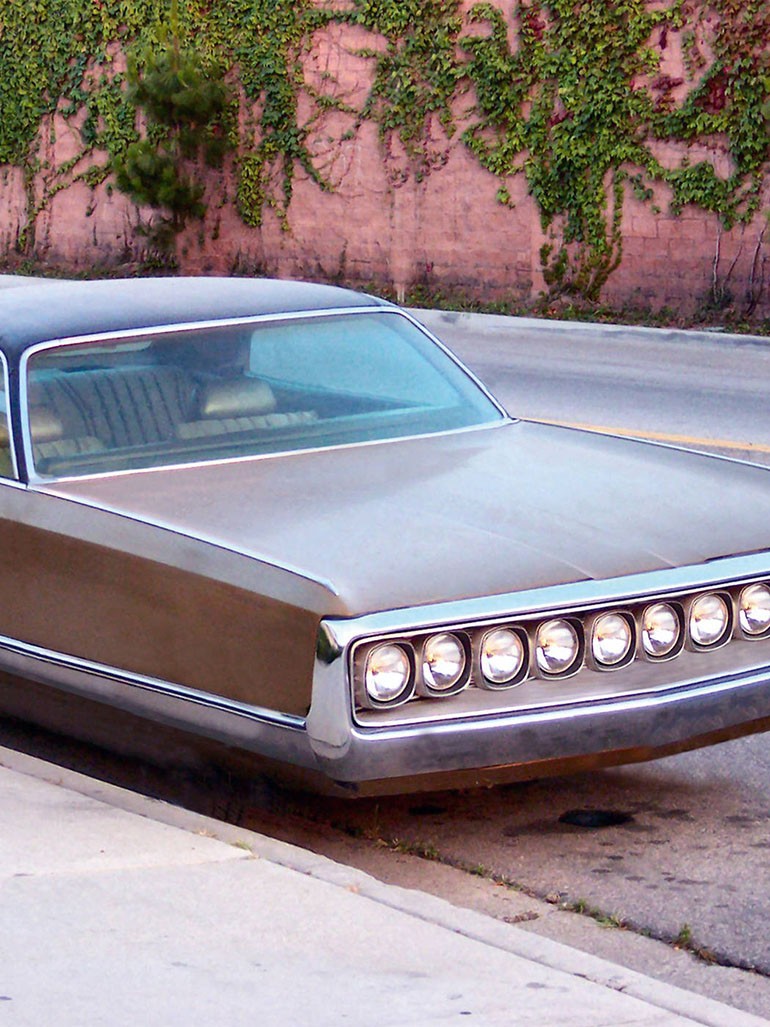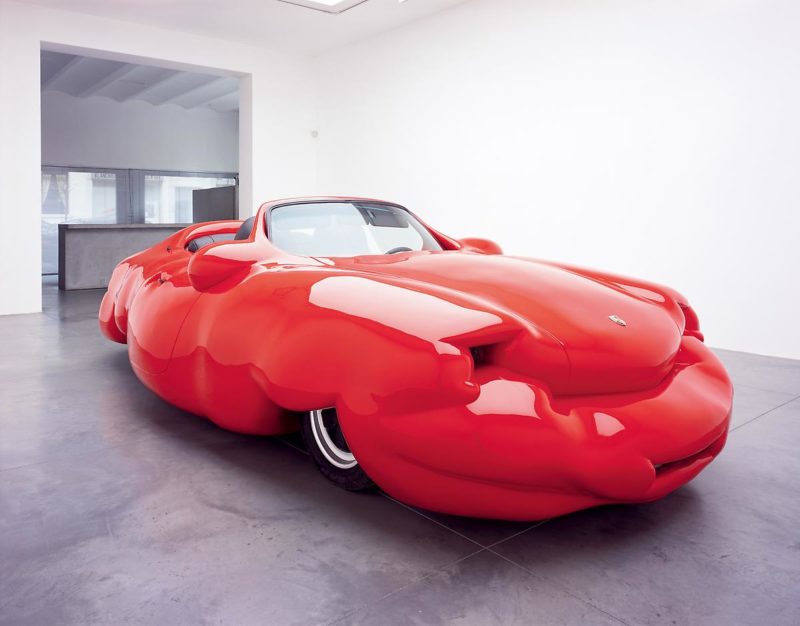
Who is Erwin Wurm?
Erwin Wurm is one of the greatest sculptors to come out of Austria. He is known internationally for the bizarre sculptures he has created throughout his career. Wurm was born in Bruck an der Mur, Styria, Austria, and currently lives and works in Limberg and Vienna, Austria.
Fat Cars
Wurm thinks the creation of sculpture is adding and detracting material to an object. In all his works, he achieves this by layering clothes over each other or creating fat, inflated, or obese objects.
In his series titled Fat Cars, Wurm created numerous inflated, tubby, life-size sculptures that protuberate like overfilled sacks, trying to create the look of fatness.
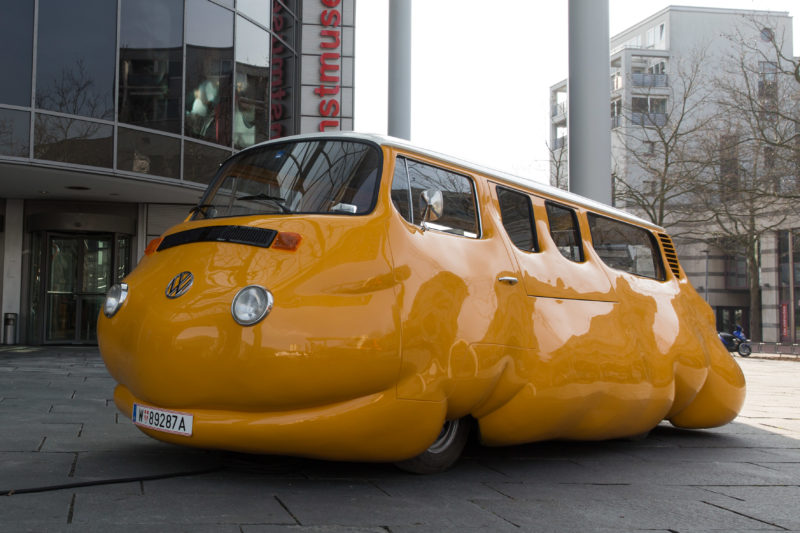
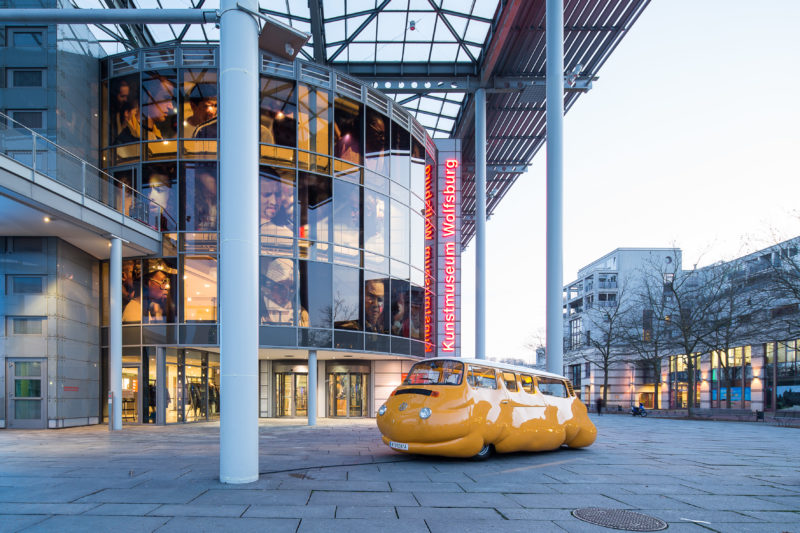
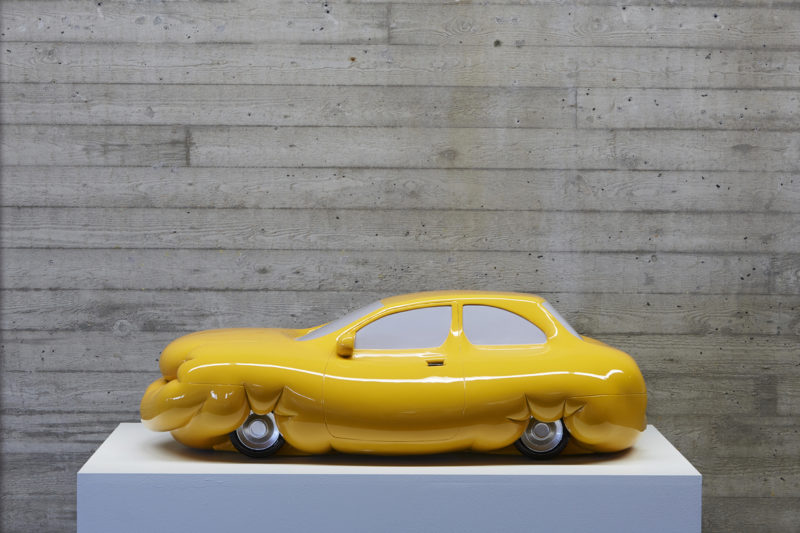
The first Fat Car & Failure
The first sculpture of the Fat Car series was designed and created by Opel designers but didn’t really achieve the shape and size that Wurm wanted. He admitted to an interviewer in Austria that he wanted to mix something like a biological system with a mechanical one.
However, the Opel designers computerized the process and could not deliver the kind of “natural” smooth-edged shapes that Wurm wanted. So he ended up using only the chassis of a real car. To create a sculpture he had in mind, Wurm ended up using polyurethane foam and Styrofoam framed with lacquer.
Video: Making of
1 min 8 sec
Artists & Cars
Artists & Cars
Before Wurm, artists in the 1990s and early 2000s also had an issue with consumers’ obsession with cars. They used to chop up contemporary luxurious cars to create flattened versions of the real vehicle to undercut what were fundamentally cultural icons.
In the 1990s, artists wanted to show that people’s love for cars affected art and what they use as an emblem of beauty and contemplation. And by chopping up these cars, they showed that the real reason people love them is for their function, but with all the iconic parts removed, cars are essentially useless.
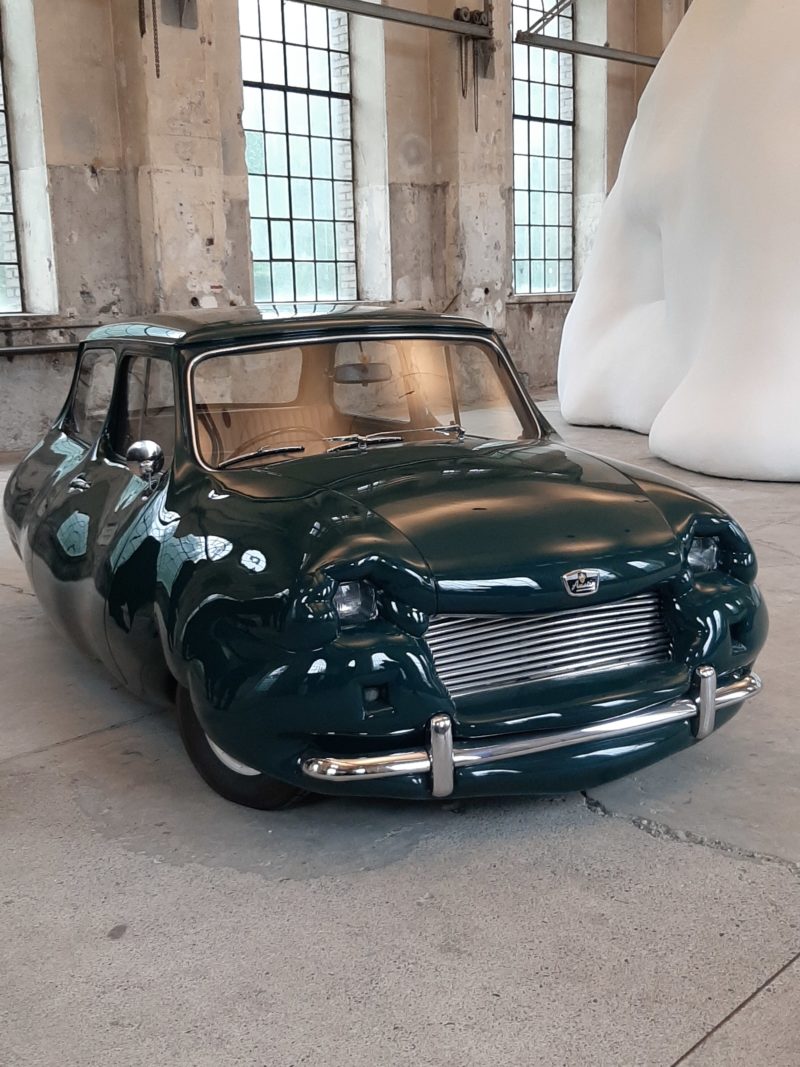
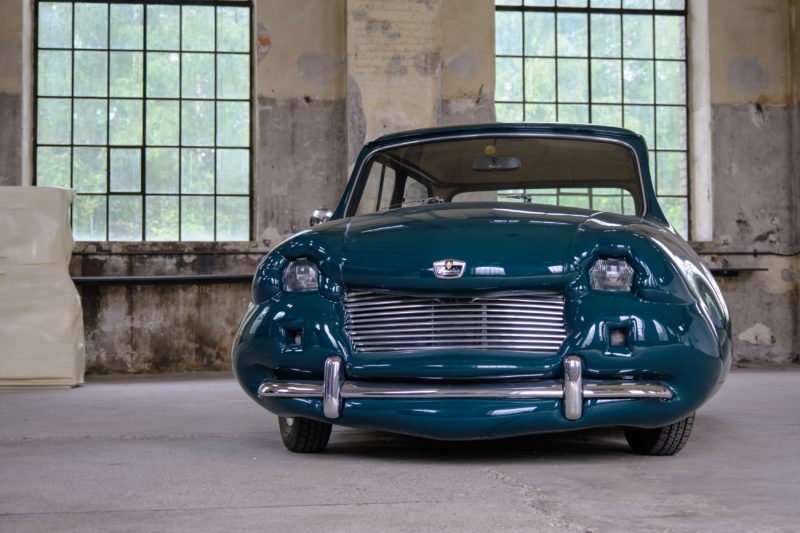
Inspiration
To some extent, Wurm drew inspiration from the works of these artists, but with a different take. He felt he could drive the point home by making the cars fatter instead of thinner like his predecessors.
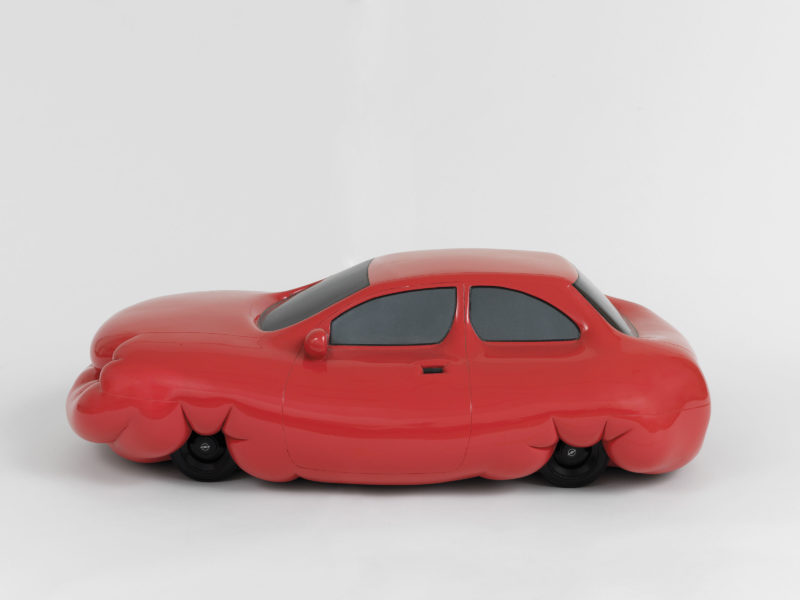
These fat cars look like they would burst out of the confines of their bodywork in a minute. The first-ever care in the series was a “Fat Convertible” launched in 2004, and in 2006, the artist created another car titled “UFO“, which is a wheel-less car.
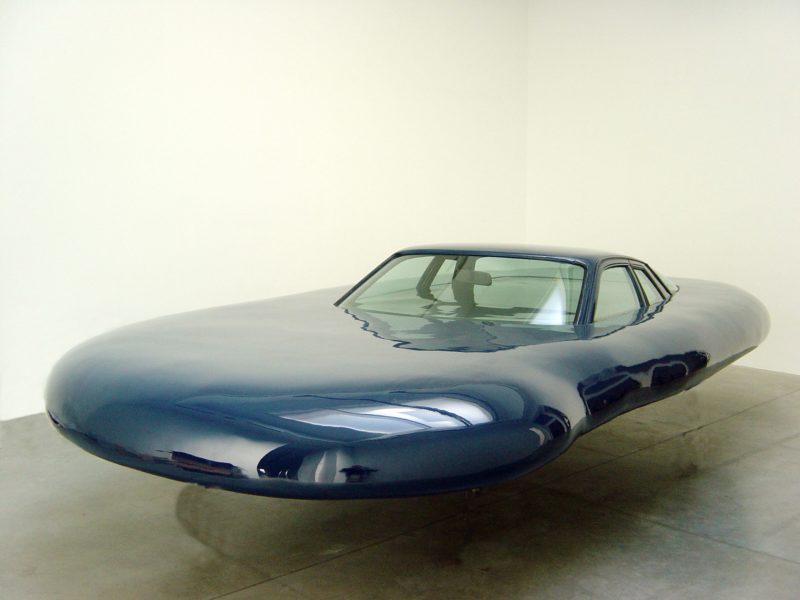
Fat House
The artist also created a Fat House on a near life-size scale. In an interview he said 12:
The car and the house, the two objects which I’ve made fat, were always the most beloved objects of human beings – before they created the iPhone. It’s how we address our well-being, our wealth, our coolness. It’s social status.
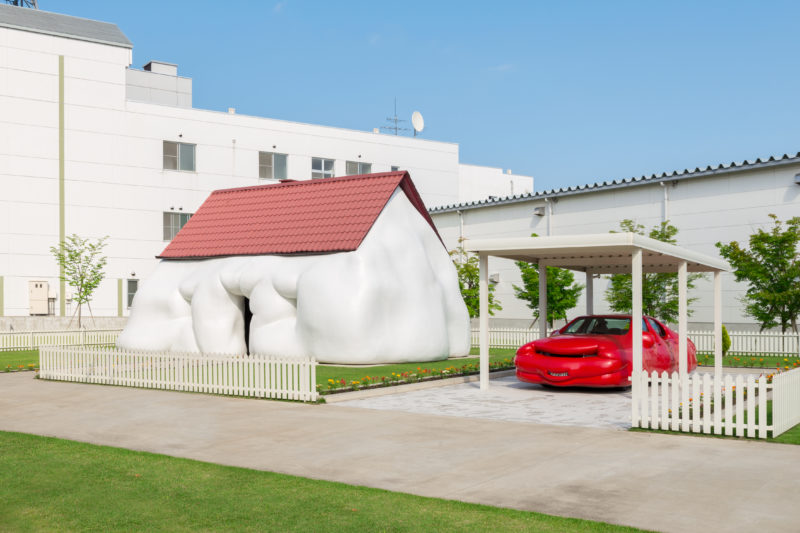
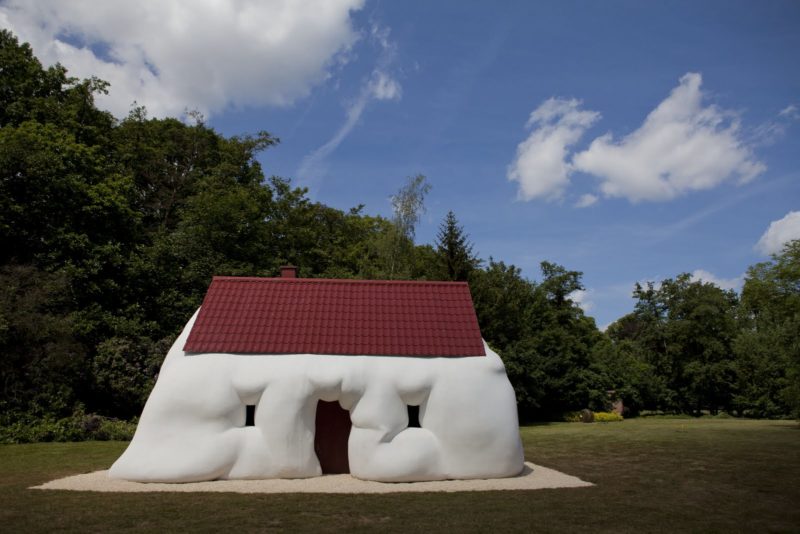
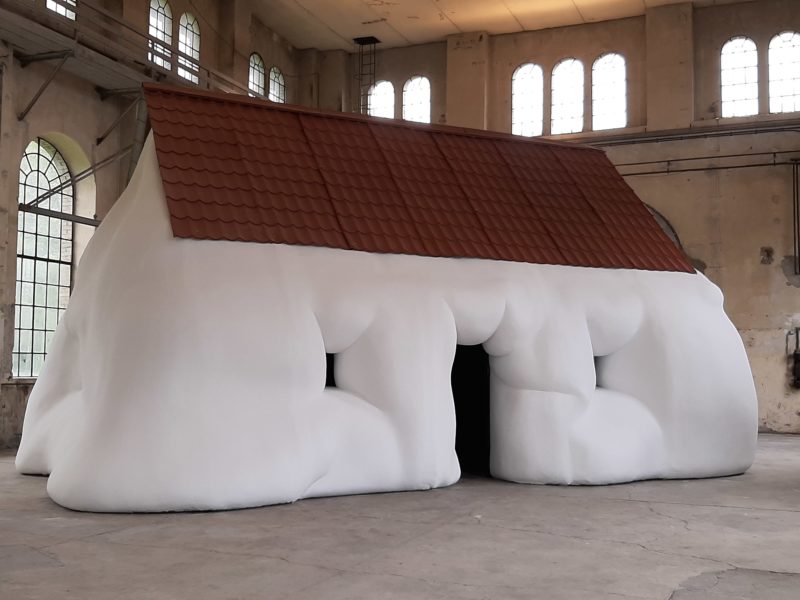
Exhibitions
The Fat Cars have been shown in exhibitions around the world, including stops in San Francisco, Moscow, and the Rose Art Museum at Brandeis University in Waltham, Mass.
Wurm also exhibited his works at Lehmann Maupin Gallery in New York and the Galerie Krinzinger in Vienna. At Xavier Hufkens, a real-life size, the red first version of Fat Car occupied the gallery’s main exhibition space. The sculpted versions in shining, bright colors, images, and drawings were displayed in the adjacent rooms.
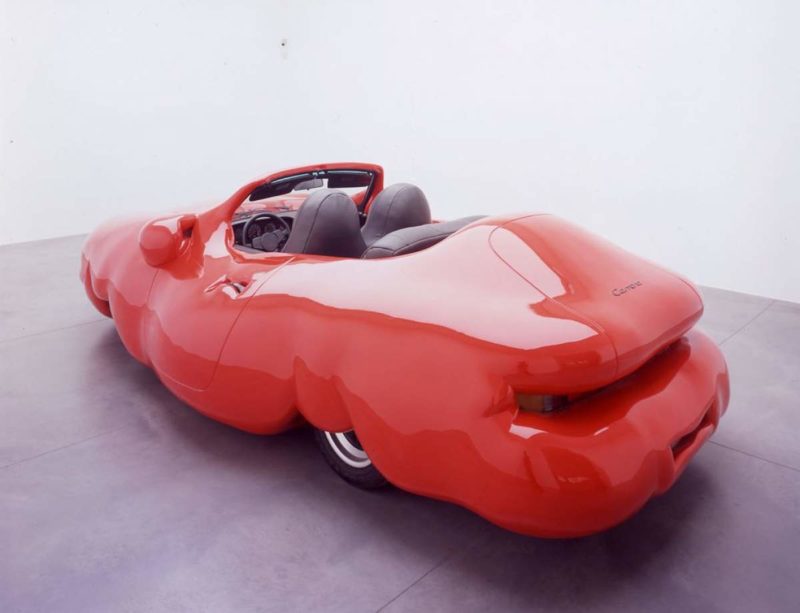
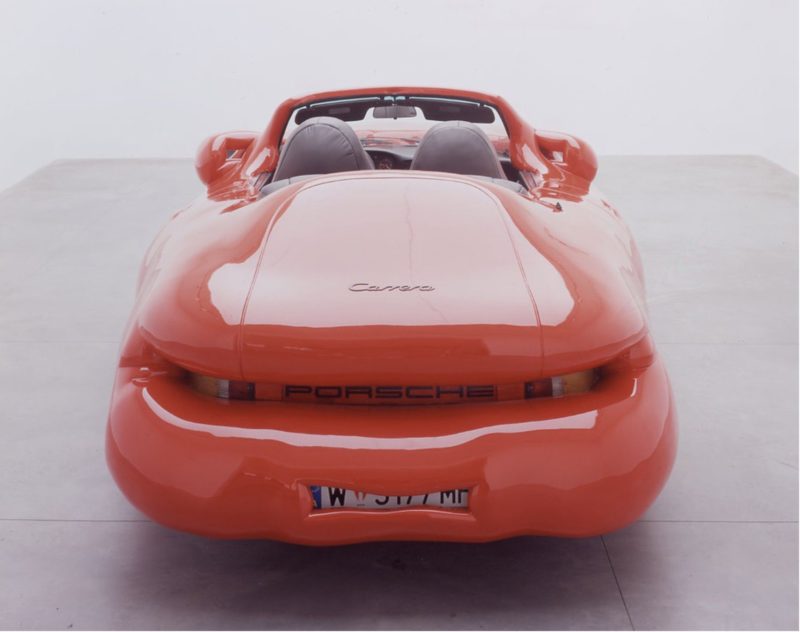
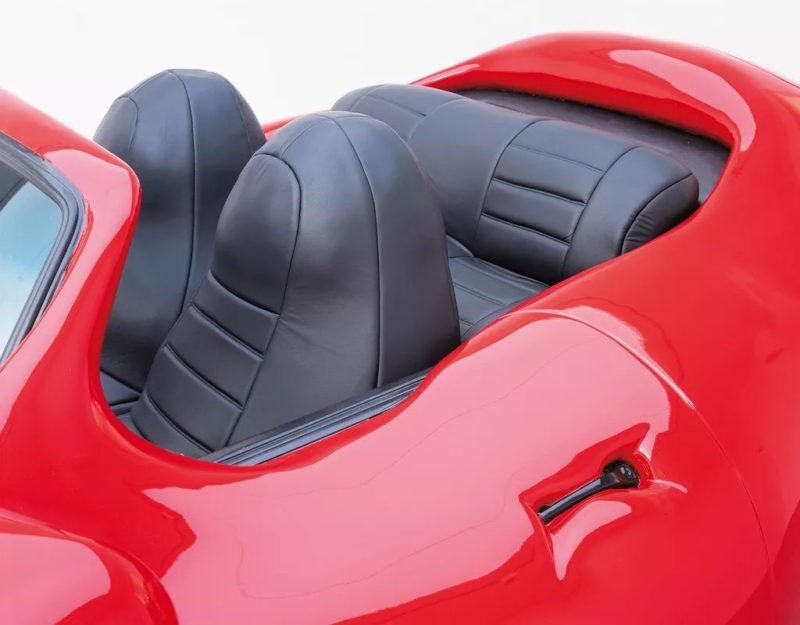
The meaning
Wurm’s fat projects am at critiquing the consumer culture and the Western culture’s appetite for material objects. The artist once noted that many consumers are fascinated with having bigger cars and bigger houses, which is what he creates in these works of art. Wurm believes that cars are like a religious symbol in modern culture, so he decided to show that affectation in physical form.
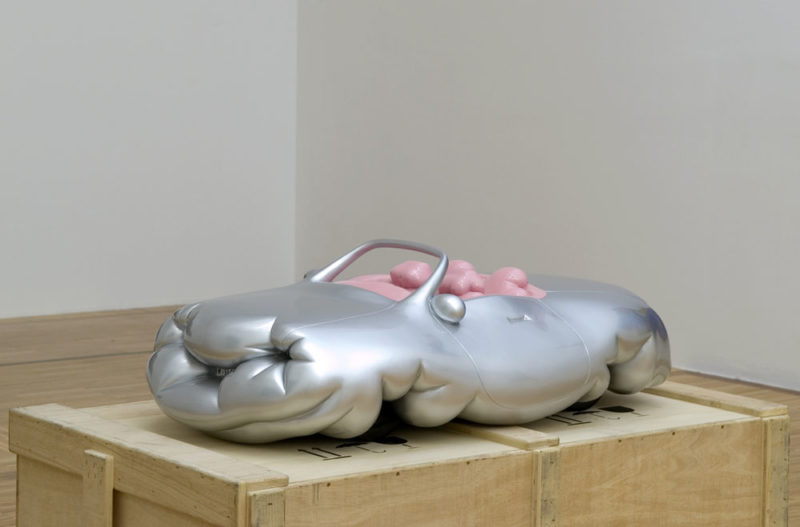
Wurm gave the idea of sculpture an entirely different meaning and dimension. While the Fat Cars appear humorous, Wurm thinks that is beside the point of the sculptures. In an interview, Wurm said 34:
At least the assumption that my work is predominantly humorous is wrong. The Humorous aspect of my work may be a superficial one that, on the first contact, may provide more immediate access to work, but beyond that, there is a deeper meaning to the work, which it is for the viewer to discover.
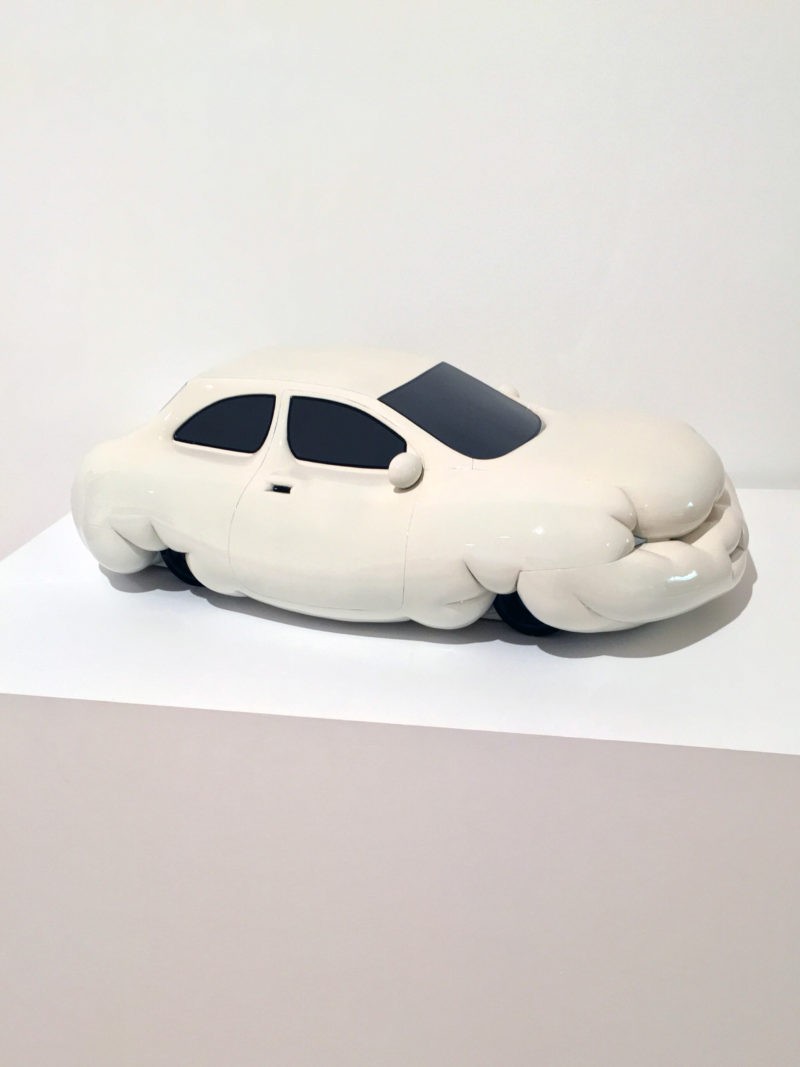
Analysis
Cars may be on the verge of vital change – with batteries and electricity-charged engines perhaps replacing the internal combustion engine. At this time, artists like Wurm appear to be reconsidering the vehicle as a symbol.
Besides just attacking the modern consumers, Fat Cars may also symbolize more to carmakers who lose sleep over the looming fuel economy standards, for those sweating to save the cost from the coming models of automobile.
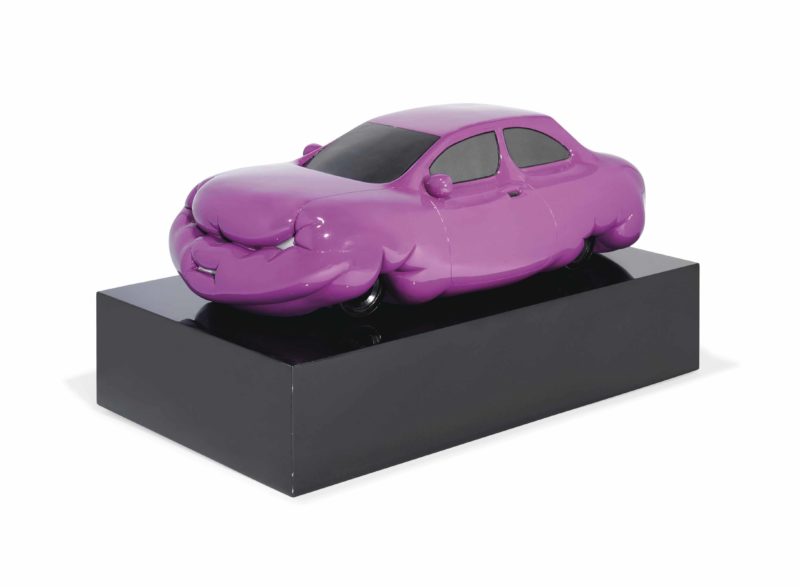
To some, looking at the Fat Cars is a quite uncomfortable experience. The personified vehicles give the impression of possessing a will of their own.
Wurm also tries to directly link to the greediness of consumerism 5 that is rampant in the automobile industry. But for those who are not keen on the deep meaning of the sculptures, Fat cars are just hilarious pieces to look at, as you imagine what a world full of squishy automobiles would be like.
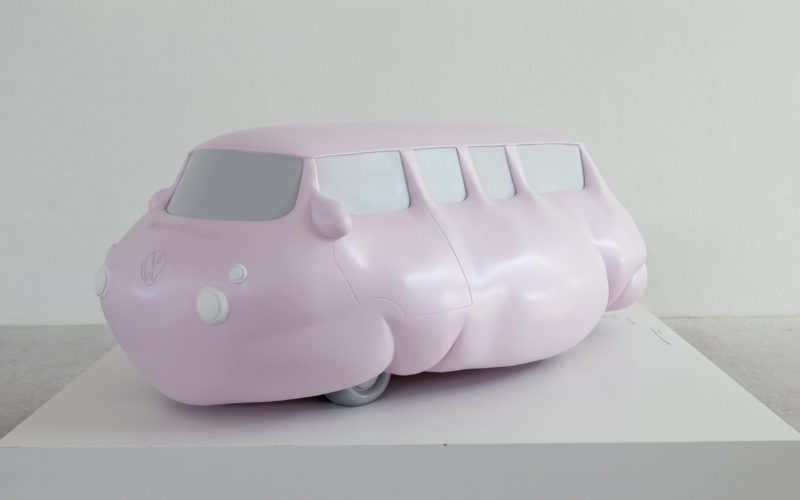
The Fat Cars address the typical concept of the volume of the sculpture. Just as his definition of sculpture, Wurm’s adding layers of material onto a car, he spreads it to the extent that the vehicle or the object of use loses its original proportions and form.
The Fat Cars can also be viewed as a transformation from a metallic item into a visually soft entity in a rather surrealist tradition. The sculptures in this series appear to thaw like in Dali’s work; the car does not become immobile because of its “obesity” and massive volume, but furthermore, due to its smoothness. The car seems to be a grotesque monster.
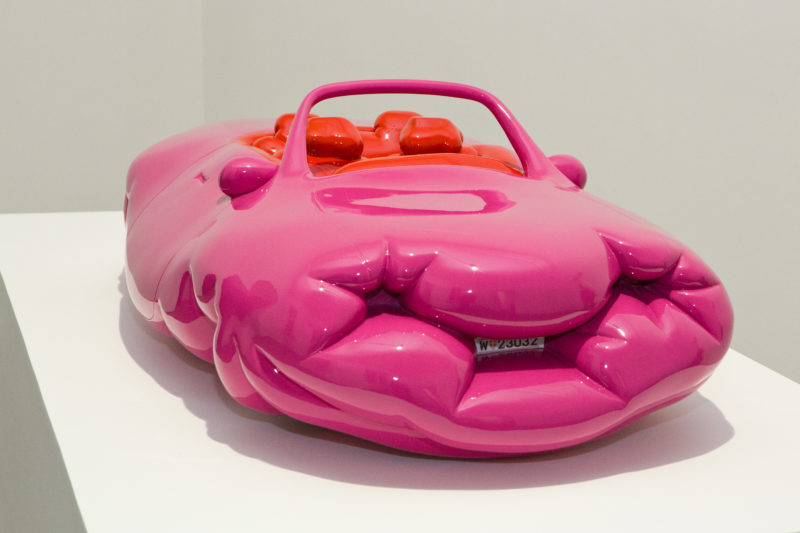
Conclusion
Despite the pieces looking ridiculous and humorous, there is a sharp, pointed criticism behind them regarding how funny the owners of these cars are to the artist. Fat Cars delivers a biting critique of the current value system, as the commercial world demands people to stay thin but to keep consuming their products.
